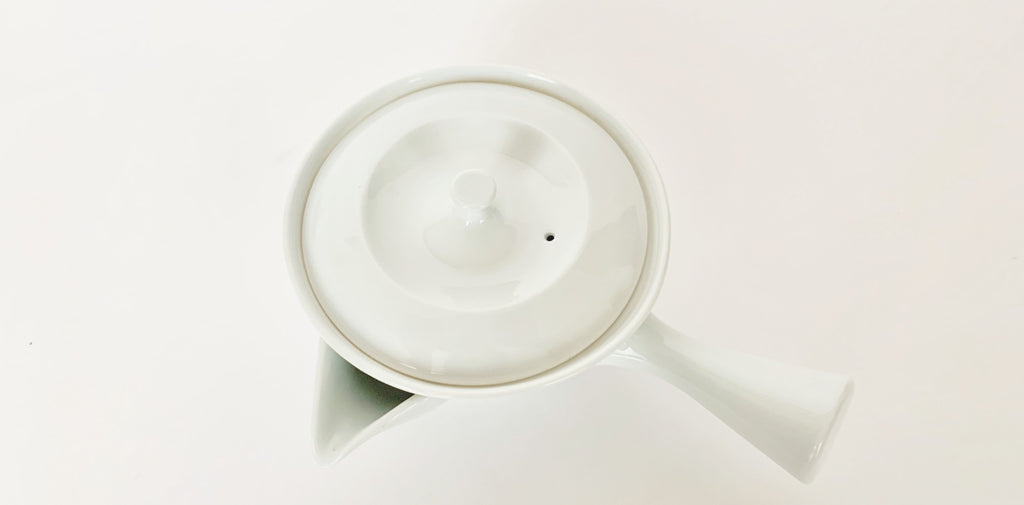Tea is a drink many people have nearly every day and a few times a day, so the tea pot becomes stained and strainer is clogged quite easily and thus they need proper care. The Japanese tea pot “Kyusu” has a strainer either built-in or removal. The built-in strainer is made into the ceramic, so it cannot be removed. If this type of strainer needs cleaning, use an unwanted tooth brush or cotton swabs to remove the clogging or stains.
The removal strainer is made of mesh basket shaped strainer and this is placed at the opening of the pot. This type of strainer is quite easy to look after, as it is not attached. If cleaning is required for the basket shaped strainer, use an unwanted tool brush to remove clogging and stains, and then rinse. If the strainer is damaged, buy a new one and replace the old one.
Kyusu also needs every day care. Every time you make tea, pour hot water in the pot with the strainer in it. Leave it for 1~2 minutes and discard the hot water. This practice cleans the pot and strainer as well as removing old tea particles left in the pot.
When you finish tea making, wash Kyusu with water thoroughly and put it upside down to drain. Please note that you should not use detergent to clean Kyusu at any time because detergent has a strong smell and if this is absorbed into the ceramic surface of Kyusu, it will ruin the taste and aroma of the Japanese tea. However, if the stains are stubborn, use salt, bicarbonate or specially designed bleach to remove them. Salt, bicarbonate and specially designed bleach are also effective to remove stains built up in the spout. At this time, use a cotton bud to rub to remove the stains, as the opening of the spout is small.
Finally, now and then, it is recommended to leave the strainer to dry completely for the hygiene reasons.



